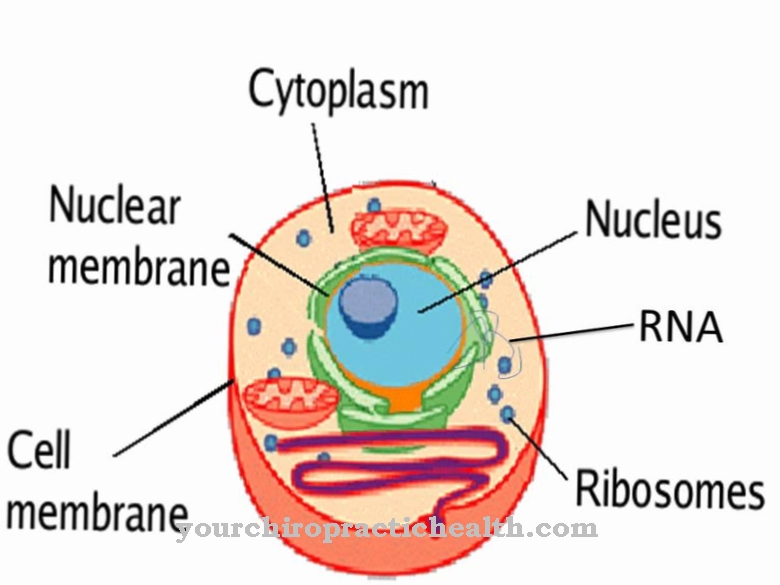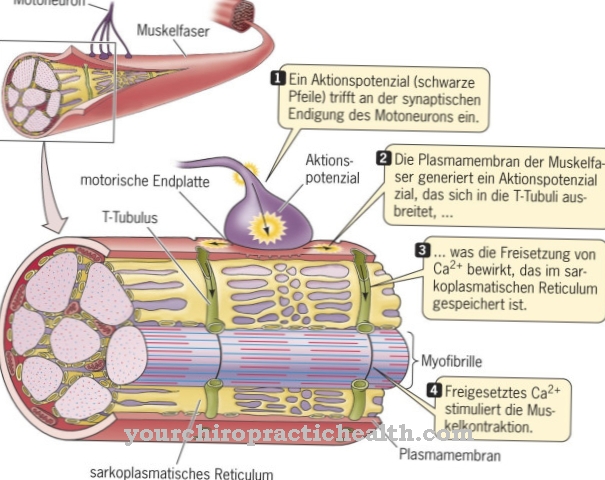The Olfactory mucosa is responsible for the sense of smell. It is located as part of the nasal mucous membrane in the roof of the nose. Diseases of the olfactory mucosa can lead to olfactory disorders.
What is the olfactory mucosa?
The olfactory mucous membrane contains special sensory cells that absorb smells and transmit the information via electrical impulses to the brain for processing. So-called chemoreceptors take care of the uptake of olfactory molecules within the olfactory cells.
In humans, the olfactory cells are located in the olfactory region of the nasal mucosa. The olfactory region describes the part of the nasal mucous membrane that is responsible for the perception of odors. It is localized to the left and right in the roof of the upper nasal cavity. In addition to the olfactory cells, there are also supporting and basal cells in this area. The olfactory cells are so-called bipolar neurons with dendrites and axons as nerve processes.
Dendrites provide the input of electrical impulses while the axons transmit these impulses. The sensory cells renew themselves every 60 days. The olfactory cells are one of the few nerve cells that keep renewing themselves. They develop from the basal cells, i.e. from the stem cells of the nasal mucosa. The supporting cells stabilize the tissue statics of the olfactory mucosa.
Anatomy & structure
The olfactory mucous membrane located in the roof of the upper nasal mucous membrane is colored brown and occupies an approximate area of 2 x 5 cm. It is made up of olfactory cells, supporting cells, microvilli cells and basal cells. It also contains serous glands.
Humans have about 10-30 million olfactory cells. In comparison, their number in dogs is around 250 million. Each olfactory cell still has 5-20 hairs with olfactory receptors. These hairs stick out of the mucous membrane and are coated with a thin layer of mucus. Odor molecules arriving there dock onto the odor receptors and excite them. There are around 350 different types of olfactory receptors.
Each species only responds to a specific molecule. So 350 different smells can be distinguished. But the processing and filtering of these impressions is done by the bundled outgoing nerve fibers, the axons. These axon bundles are connected to an upstream part of the brain, the olfactory bulb. This is where the synaptic interconnection of the sense of smell takes place.
From there, the information is then passed on to the appropriate brain centers. On the olfactory bulb, the axon cords are divided into two parts. The medial cord reaches the olfactory tubercle. The information is saved there, but remains unconscious. The lateral cord leads to the primary olfactory cortex, where the information from the olfactory mucosa is deliberately processed.
Function & tasks
By exercising its function, the olfactory mucous membrane contributes significantly to the health of the body. Because the olfactory function protects the organism and especially the respiratory organs from the harmful effects of toxic substances. Bad smelling gases create a feeling of disgust, so that the organism in question moves out of the danger zone as quickly as possible. On the other hand, pleasant smells attract because they usually have positive associations, such as delicious food.
Often the sense of smell is not taken that seriously. However, people who no longer have a sense of smell can enter dangerous situations unnoticed. It is no longer possible for these patients to detect spoiled food or escaping gas by smell alone.
That is why the corresponding olfactory receptors for vital smells have developed during evolution. Odor receptors are certain proteins that are still linked to a G protein. According to the lock and key principle, they have developed precisely fitting shapes for certain odor molecules. The signal molecule is directed to the receptor via a hair of the olfactory cell and, if exactly matched, connects to it.
The resulting excitation is then passed on via the axons. So-called mitral cells in the olfactory bulb probe and then amplify the same odors using the selection of 350 different receptors and forward them to the corresponding brain centers. There, the excitations that certain signal molecules have caused in the receptor molecules of the olfactory cells are made aware by smell impressions.
Diseases
Diseases of the nasal mucosa and especially the olfactory mucosa can lead to olfactory disorders. The olfactory disorder is the collective term for a large number of deviating olfactory sensations. First of all, a distinction must be made between quantitative and qualitative olfactory disorders.
Quantitative olfactory disorders indicate a partial (hyposmia) or complete loss (anosmia) of the olfactory ability. Hypersensitivity to odor stimuli (hyperosmia) also occurs. Causes of anosmia or hyperosmia can be brain diseases, viral infections, chronic inflammation of the nasal mucous membrane, allergies or side effects of medication. Since the sense of smell is closely linked to the sense of taste, the taste of food can no longer be properly perceived.
This often leads to malnutrition. There is also a risk of food poisoning from spoiled food, especially for older people. Mental health problems such as depression can also result from a lack of sense of smell. Qualitative olfactory disorders are expressed in different olfactory sensations. In parosmia, for example, the perception of smells changes.
A phantosmia lets you perceive smells that do not even exist. It can be viewed as an odor related hallucination. With cacosmia, pleasant smells are perceived as unpleasant, while with euosmia, unpleasant odors appear pleasant. Qualitative olfactory disorders can, among many other causes, also be caused by damage to the olfactory mucosa.
You can find your medication here
➔ Medicines for colds and nasal congestionTypical & common nasal diseases
- Stuffy nose
- Nasal polyps
- Sinus infection








.jpg)



















